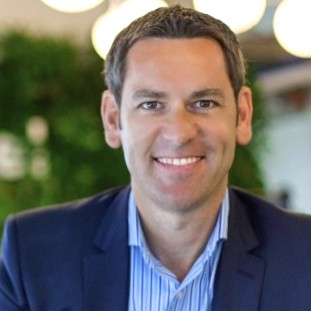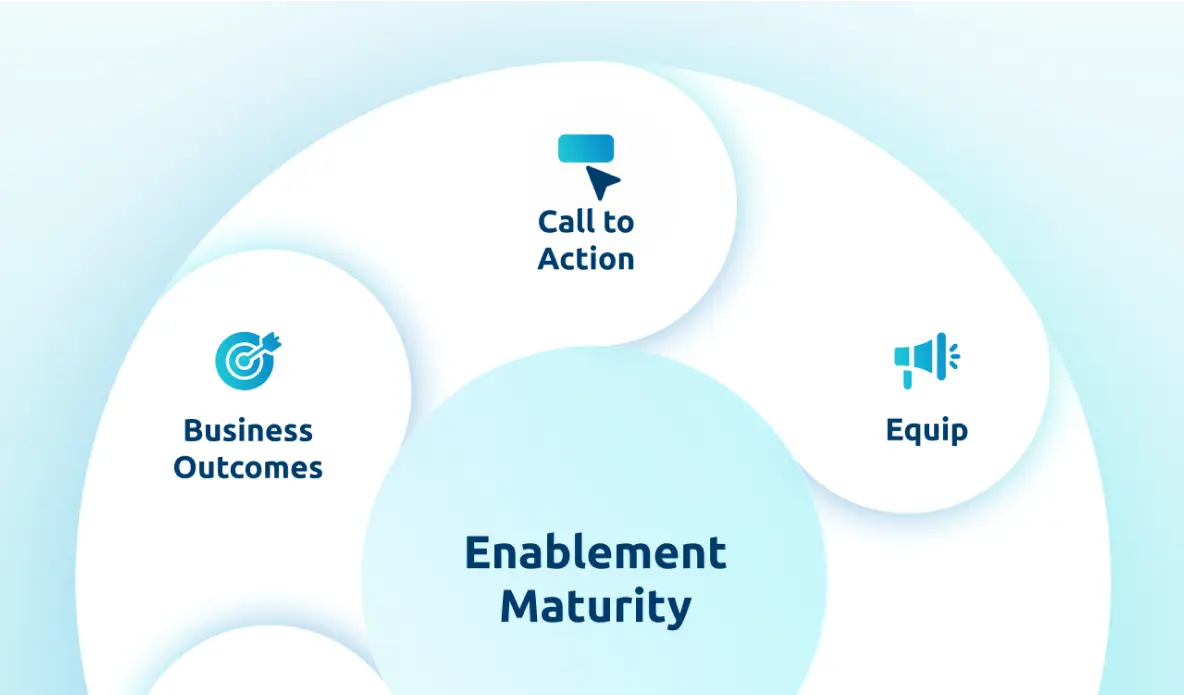Recent research from Highspot on the CRO outlook for enablement shows that 80% of sales leaders believe that sales enablement is a must-have. So, why is sales enablement mission critical, and what does good sales enablement look like in the eyes of a revenue leader?
To watch the video of this episode, visit our YouTube channel here.
To learn more, read the blog post here.
Shawnna Sumaoang: Hi and welcome to the Win Win Podcast. I’m your host, Shawnna Sumaoang. Join us as we dive into changing trends in the workplace and how to navigate them successfully. Here to talk to us about this today is Graham Younger, the president of worldwide field operations here at Highspot. Graham, thank you so much for joining us. I would love for you to tell us a little bit more about yourself.
Graham Younger: Hi Shawnna, it’s good to be here. I joined Highspot just over 60 days ago. My background is in enterprise technology and high-growth SaaS companies. It is an incredible opportunity here at Highspot to really make an impact. I’m very excited about the opportunity that we have ahead of us.
SS: We’re excited to have you here on our podcast. Now, I’d like to start with your perspective on the sales environment today. Tell us about some of the challenges that organizations are facing.
GY: It’s a very challenging macroeconomic environment that every company is operating in. Whether you’re selling, or you’re doing business, or whatever field you’re in, it is tough. When things get tough, it requires you to really focus on doing more with what you have or doing more sometimes with less. Getting the very maximum return out of your investments across all of the disciplines internally within your organization is really critical.
I think that the economy is not going to drastically change for the next four, maybe six quarters. Every company right now is focused on how to become more efficient at what they do with the investments that they have already made.
SS: To that point, what do you think that businesses should be prioritizing to address those challenges and be successful in this current sales environment?
GY: Sales enablement is one of those discussion points in every boardroom and within every executive team currently. There’s not an earnings call up and down the land or across the globe that the question isn’t asked, what are you doing about sales productivity and sales efficiency?
Go-to-market is a huge investment. Taking your products to market, building your pipeline, executing against that opportunity, and trying to monetize your value, is a really expensive investment. A lot of companies can’t just throw more resources. They’ve got to get, as I said, more out of what they have. Equipping those individuals to be more productive, to eliminate some of the time that those individuals are searching for content, are trying to do research, are ultimately not actually equipped to do the role that they’ve been brought in and paid a lot of money to do is really costing organizations a lot of money. Investing and ensuring that you have a sales enablement platform is absolutely critical to your success. It’s table stakes in the current environment.
SS: Absolutely. How have you seen business priorities change over the last few years? What are some trends you’re seeing in the market?
GY: Business priorities are, again, not really a case of growth at all costs. It’s growth with a path to profitability or profitability. It’s really critical that the best-run companies are investing in driving a better return out of their current investments, as I’ve mentioned before. We’re seeing a lot of focus on sales enablement driving sales productivity, and we’ve seen in the thousand-plus customers that we have today, 92% of executive leaders saying that their investment in enablement has improved sales performance.
If you look at a lot of organizations, 80% of the revenues come from 20% of their quota carriers from a sales org perspective. We want an optimized sales performance organization to have a bell curve that’s pretty healthy where 70% of your organization is at 70% attainment or above. We are focused on trying to move that bell curve slightly to the right so that more people are performing at a higher level. How do you do that? Ensure that they have the right structure, the right content, and the right approach to managing and executing against that opportunity in the market.
That can be sales plays, product pitches, it can be customer-specific content, ensuring that they have all of the right data information and are equipped to go out and perform to the maximum of their capabilities. The way that you’ve equipped them and set them up for success is absolutely critical for organizations to perform and to have a level of sales productivity and drive the efficiencies that they need in order to, again, drive the results to the organization that they need in order to survive and thrive.
SS: I love that. Now, for the naysayers, or maybe the revenue leaders that aren’t fully bought in on enablement yet, what’s the potential risk of not addressing some of the challenges that organizations are seeing in this new sales landscape?
GY: Underperformers not delivering what they need to, not because they’re not the right people, but because the organization hasn’t equipped them to go out and succeed. Sun Tzu’s The Art of War talks about never entering a battle unless you’re equipped and the odds are stacked in your favor to compete and win.
If you haven’t equipped your teams and given them everything that they need in order to compete and win, not just in executing the value proposition that your company is taking to market, but also in understanding how you’re positioned and differentiated competitively, then ultimately, you are wasting money. You are not being productive at a level that ultimately allows you to be respectful to the investments that your CFO has underwritten in building a go-to-market organization.
SS: Absolutely. For our enablement audience, how can enablement help businesses navigate the changing sales landscape and really help drive sales productivity, which has been the point you’ve been landing this whole time?
GY: I don’t think you have any option. At the end of the day, people think they’re enabling their sales teams. People think that they’ve got programs in place. If you’re not governing, measuring, and analyzing all of the data associated with those sales plays, the initiatives that you’re launching, and the customer-specific activity, then you really don’t know how effective the enablement is in your organization.
For us, the data and the analytics associated with enablement is the critical component to allow you to understand whether it is actually being effective and pointing you in the right direction to do more of what works and do less or course correction where it’s not landing. When you look at just the competitive pressures and the difficult macro that we talked about before, it is really important to be agile and constantly evolving. That’s not just evolving your value proposition, but just your messaging, how you communicate, your sales plays, and landing that competitive differentiation when it matters. Structuring the sales cycle to help build a discovery component and be consultative so that you’re actually solving real business problems on behalf of your customers, not just pitching products.
SS: For organizations to maximize their investment in enablement, operational rigor is absolutely a key priority for a lot of organizations. How can enablement programs help to drive stronger operational rigor throughout an organization?
GY: In order to have success, you’ve got to operationalize any investment and setting it up, governing it, having the right people involved, measuring it, and then having data and analytics are absolutely critically important to ultimately the ongoing success. Something has to become part of your operating rhythm unless it’s something that’s natural and that fits in with what you do and how you turn up every day. If you have to punch out and do something that’s unnatural, most likely you’ll do it a couple of times and then not continue it. It has to become part of your operating rhythm, part of your daily routine, part of something that you do naturally, and part of something that becomes core to your execution.
So really, it’s having the right executive sponsorship, the right visibility, the right measurement, the right governance, and the right buy-in from the team. You’ve got to show the teams why this is going to make them more successful, and then ultimately showcase those success stories. I mean, half of CROs report a 5x ROI in less than a year by investing in a sales enablement platform.
Highspot is the highest-rated enablement platform because of our ability to get a quick time to value, stand up, and succeed early, the post-sales teams, expertise in being able to identify how to execute against the opportunity to solve the problems that you have internally and actually bring that value to the sales organizations. It’s incredibly exciting to see some of the successes that we’ve had across our customer base. I mean, you have so many different stats across so many different customers that ultimately allow us to be confident that we are making an impact, that we are making a difference every day, and the customers are really getting strong benefits from their investment and their relationship in being a partner with Highspot.
SS: I couldn’t agree more. Now, on the technology side, what would you say are must-haves in the sales tech stack? Specifically, you’ve already talked a lot about the value of having an enablement platform, but where does an enablement platform fit into that picture?
GY: I think there are three core components of a sales tech stack that I look for. That’s the CRM, you want to have a system of record. It’s really important to build up that base. Salesforce, obviously being the market leader CRM vendor and a company that we have native integrations with and relationships with them. They’re a customer and we are a customer. They’re an investor, so it’s a very strategic special relationship that we have with Salesforce.
We then have a revenue intelligence component, which is the engagement, forecasting, and reporting. Being predictable as a company, being able to forecast predictably, being able to execute and analyze deals, and getting into that level of detail is really important, especially if you’re a publicly traded company. There’s the revenue enablement, the equip, train, coach, the strategic initiatives, the sales productivity, all of the investment in actually what we’ve just talked about, which is equipping your people to perform at a level that ultimately drives real efficiency across your go to market investments.
I think those are three critical components and enablement plays such a critical role there. Again, if you haven’t equipped, trained, and continually coached your teams, then you’re not going to get the best out of that investment. That is absolutely critical for any company to be successful. I think all three of those components are essential within a modern tech stack.
SS: Absolutely. Now, shifting to the people front, because we are a people-first culture here at Highspot. What’s the relationship between investing in the development of your people and their performance? What role can enablement play in that?
GY: My first instinct is when you look at people and you look at high performers and low performers, for the low performers, my first question is, are we failing them? Are we giving them the tools and are we investing in their success in a way that allows them to really deliver and be successful in an organization? Having a sales enablement program, whether it’s onboarding, or reducing the ramp time, which is a critical lever to pull in any sales efficiency metric, is really key to ensuring that you’re onboarding your people, you’re investing your people, and that education is continuous.
Again, as you adapt to your competition, you adapt to the markets, you bring new products to market, you have new sales plays, you have new initiatives, all of that is continuous, so to have an enablement platform to deliver that equip, train, and coach, and then to be able to measure that is really important.
My first focus in any organization is when I see lower performers. Are they really being given the best opportunity? Are we failing them before I conclude that they’re failing us? People are getting the right talent in an organization. If you look at leadership within, the go-to-market the success of leaders, 80% of that is attributed to being able to recruit and retain the best talent, but to develop that talent and their skill sets to get maximum return from that investment. People development is a critical component in the overall success of an organization.
SS: I love that. Graham, last question for you. What advice would you give other executive leaders who are looking to unlock sales productivity within their organization?
GY: Talk to us. It is very simple. We can really make an impact. If you look at some of the things that we’re doing, like DocuSign, I’ve seen a 20 percent increase in deal size and, a 10% reduction in sales cycle times. These are real things that move the needle and drive to the bottom line. Not just efficiencies, but really impact the overall performance of a company.
If you look at if you can’t recruit more sales talent, what you want to do is get the talent that you have paid a lot of money selling more. How do you get them to sell more? You reduce the time that they’re spending researching, pulling together content, and doing all of the homework by making it easy for them to find the right content, execute the right sales play, use generative AI to help them do the research and pull the information together, that again, helps them cut down all of the time to prepare and helps them spend more time in front of customers, executing and doing the things that you are paying them a lot of money to do.
SS: I love that. Graham, thank you so much for joining us today. I really appreciate you sharing your insights.
GY: Great to be here. Thanks for the opportunity.
SS: To our audience, thank you for listening to this episode of the Win Win Podcast. Be sure to tune in next time for more insight on how enablement success can be maximized with Highspot.




